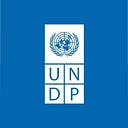Coming to terms with a new life
During a recent mission to Ukraine, we introduced photographer Mackenzie Knowles-Coursin to a family who had been displaced by the conflict in eastern Ukraine. His resulting photo essay shows a few of the human faces behind displacement, and he shares his experience here.
Over 64 million people are currently displaced from their homes. 64 million that have seen their towns fade away, their communities fragmented, and their families ripped apart. 64 million working to build new lives and trying to understand how to say goodbye to old ones.
The images of this displacement are ubiquitous — fighting, injuries and death, pain-stricken faces, and dangerous journeys. For those who survive, the journey has still just begun once safety is reached and the dust settles. Often, the rebuilding process comes only after a state of limbo, questioning, and uncertainty.
I’ve spent considerable time with people forced from their homes by the violence of both war and poverty. Regardless of who they are, where they are, or what they’re doing, they often carry a sadness and confusion. Grief not only from mourning loved ones who may have been killed, but also the loss of their former lives. They must grapple with confusion not simply from navigating a new culture, community, or government, but also from the paradox of being uncertain enough about when or if they’ll be able to return to their former life that they can’t emotionally invest enough to build a new one.
This past winter, I spent a few days staying with a family in their home in eastern Ukraine. The family had been forced out of their life in Charcizk and now lived 70 miles away in the industrial town of Kramatorsk.
The family was lucky in relation to many. None of their immediate family had been killed in the fighting, they had a home with heat and running water and enough food on the table, and both the father, Sasha and the mother, Marina had paid employment. The language, food, and customs were all the same and, at least on a few superficial layers, the family could live a life very close to the one they were forced to leave behind.
And yet these relative amenities didn’t prevent the persistent grief of losing their home and community. Sasha frequently spoke of the difficulty in building relationships with people in Kramatorsk, while also expressing the growing feeling of estrangement from his friends and family back in Charcizk. He felt marooned and unsure how to find any bearing.
When I’m suddenly immersed into the lives of others, small moments stick with me. Brushing my teeth as Sasha tucks his son into bed with a kiss on the head; stumbling into the kitchen where Marina prepares tea in the early morning light, both of us half asleep and unguarded in our grogginess, watching the way Marina softly touches Sasha’s shoulder as she walks behind him at the kitchen table. These unexpected, seemingly mundane moments were often the most poignant ones.
“Life must go on” is frequently repeated in settings of conflict and displacement. Sometimes it’s in the jarring way people must continue their lives amidst terrible circumstances. Other times it’s the striking way someone is able to start again after losing everything.
Both contexts resonated while staying with Sasha and Marina. But what I kept coming back to was this: sometimes the thing to survive is not the operational difficulties of building a new life, but about coming to grips with what that new life even looks like and how much of your identity from before is able to survive to the next.
In that unanchored state, sometimes the only thing you can cling to as you float in some new and uncertain direction, are the loved ones around you.
